This is a great question. After taking a look at things, it was decided the best way to answer this question was using simple feature objects rather than spatial objects.
The map in question looks familiar. I used the IRQ_2_sf.rds map which is probably the same map used and shown above. There are other alternative ways to achieve the solution to this question. Jupyter Lab is the IDE used.
Using the Google API and the geocode function, the coordinates for Baghdad were retrieved.
baghdad <- geocode("Baghdad, Iraq", source = c("google") )
A tibble: 1 × 2
lon lat
<dbl> <dbl>
44.36607 33.31524
Then sf functions were used to create the sf column object.
baghdad.sfg <- st_point(c(lon, lat), dim = "XY")
baghdad.sfc <- st_sfc(baghdad.sfg, crs = 4326)
Then, using the sf map named iraq, the centroids were created.
Note: warning message - st_centroid does not give correct centroids for longitude/latitude data. For this answer, the centroids will be close
enough.
iraq.c <- st_centroid(iraq)
The distance from each centroid to Baghdad gets determined in kilometers.
head(dist <- data.frame(c(st_distance(iraq.c$geom[], baghdad.sfc)/1000)))
Units: [m]
[1] 28.63250 59.61553 215.43354 323.06418 259.14509 113.55356
And then create a date frame that includes the names, the centroid geometry and the distance values. Requires some cleaning and binding.
distance <- c(dist$c.st_distance.iraq.c.geom....baghdad.sfc..1000.)
x <- distance[]
d_Bdad_Km <- as.numeric(str_extract(x, "[0-9]*.[0-9]."))
iraq2 <- iraq[-c(5, 8,9,10,11,12,13)]
df_dist <- cbind(iraq2, d_Bdad_Km) # df as desired
And then the outputs gets plotted.
plot(iraq$geom)
plot(iraq.c$geom, add = TRUE, col = "red")
plot(baghdad.sfc, add = TRUE, pch = 19, col = "blue")
Please ask if there are any follow-up questions. The plot can be viewed at this link:
